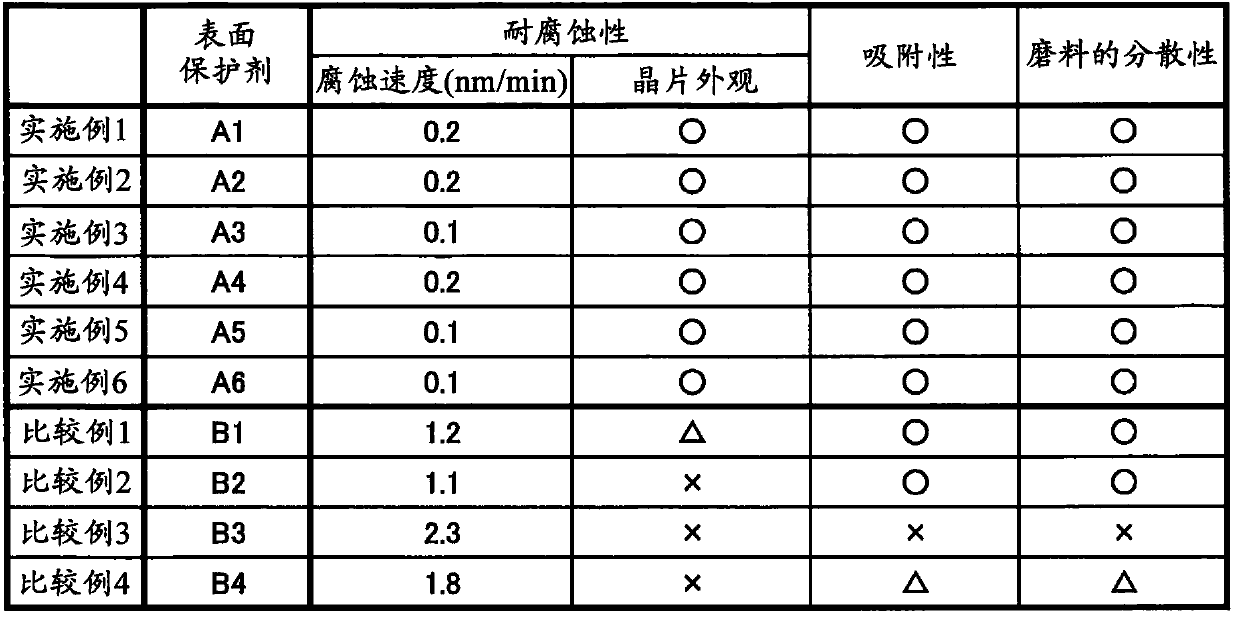Surface protectant for semiconductor wafer
A surface protectant, semiconductor technology, applied in the manufacture of semiconductor/solid state devices, surface etching compositions, polishing compositions containing abrasives, etc., can solve the problems of scratches, scratches, easy agglomeration, etc. , The effect of reducing scratches, high flatness and low defects
- Summary
- Abstract
- Description
- Claims
- Application Information
AI Technical Summary
Problems solved by technology
Method used
Image
Examples
Embodiment 1
[0086] 4 mol of 2,3-epoxy-1-propanol (trade name "Glycidol", manufactured by Daicel Co., Ltd.) was added to 1 mol of lauryl alcohol to obtain compound (A1) (C 12 h 25 O-(C 3 h 6 o 2 ) 4 -H, molecular weight: 482).
[0087] The obtained compound (A1) was diluted with water so that the concentration of the obtained compound (A1) became 15% by weight, and a semiconductor wafer surface protective agent (A1) was obtained.
Embodiment 2
[0089] The consumption of 2,3-epoxy-1-propanol was changed to 10mol, except that, compound (A2) was obtained in the same manner as in Example 1 (C 12 h 25 O-(C 3 h 6 o 2 ) 10 -H, molecular weight: 926).
[0090] The obtained compound (A2) was diluted with water so that the concentration of the obtained compound (A2) became 15 weight%, and the semiconductor wafer surface protective agent (A2) was obtained.
Embodiment 3
[0092] The consumption of 2,3-epoxy-1-propanol was changed to 6mol, except that, compound (A3) was obtained in the same manner as in Example 1 (C 12 h 25 O-(C 3 h 6 o 2 ) 6 -H, molecular weight: 630).
[0093] The obtained compound (A3) was diluted with water so that the concentration of the obtained compound (A3) became 15 weight%, and the semiconductor wafer surface protective agent (A3) was obtained.
PUM
 Login to View More
Login to View More Abstract
Description
Claims
Application Information
 Login to View More
Login to View More - R&D Engineer
- R&D Manager
- IP Professional
- Industry Leading Data Capabilities
- Powerful AI technology
- Patent DNA Extraction
Browse by: Latest US Patents, China's latest patents, Technical Efficacy Thesaurus, Application Domain, Technology Topic, Popular Technical Reports.
© 2024 PatSnap. All rights reserved.Legal|Privacy policy|Modern Slavery Act Transparency Statement|Sitemap|About US| Contact US: help@patsnap.com










